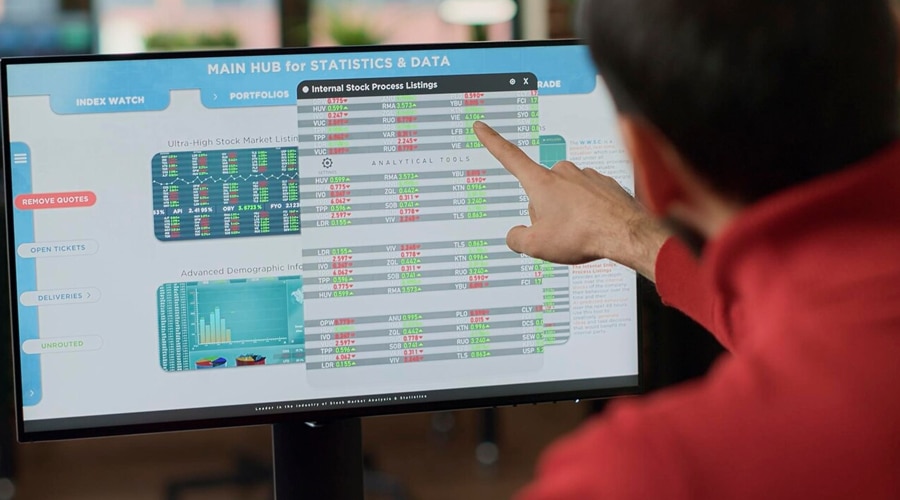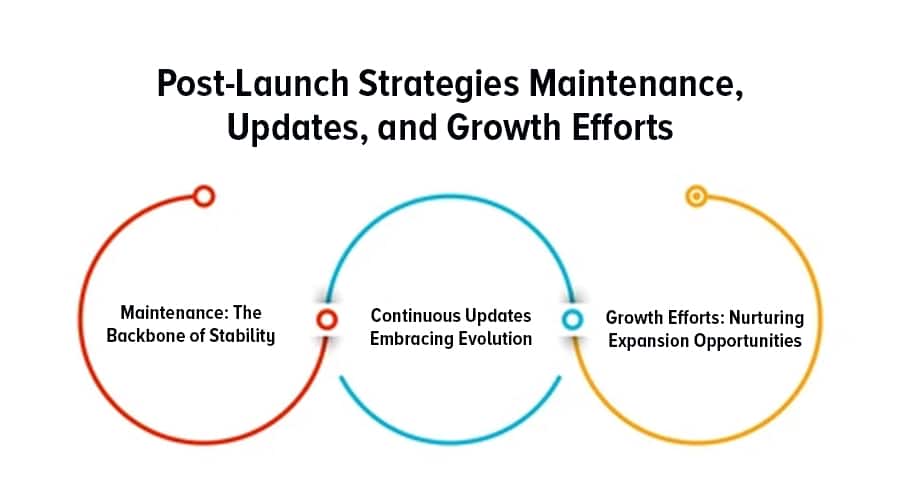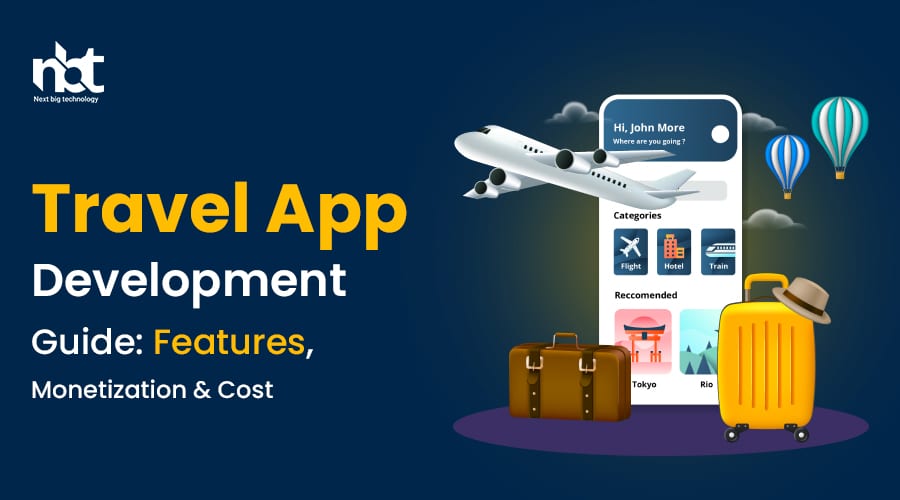Table of Contents
Understanding the Travel App Landscape
In the bustling realm of modern travel, where jet setters and adventurers alike are constantly on the lookout for seamless experiences, travel apps have emerged as indispensable tools. These digital companions offer a plethora of functionalities, from flight bookings to accommodation recommendations, transforming the way we plan and execute our journeys. However, amidst the abundance of options, navigating the travel app landscape can feel like traversing a dense jungle. Let’s embark on a journey to understand this landscape and find the perfect apps to suit your travel needs.
The Diversity of Travel Apps:
The travel app ecosystem is as diverse as the destinations it covers. From comprehensive platforms like Expedia and Booking.com to niche apps focusing on specific aspects such as local transportation or language translation, there’s an app for every facet of your journey. Understanding the diverse range of offerings is essential to finding the right tools to enhance your travel experience.
Key Features to Look For:
When evaluating travel apps, several key features should be considered to ensure they meet your requirements. These include:
- User Interface and Experience: An intuitive interface is crucial for seamless navigation, especially when you’re on the move. Look for apps with a clean layout and easy-to-understand features.
- Booking Options: Whether you’re in need of flights, accommodations, or rental cars, prioritize apps that offer a wide range of booking options to suit your preferences and budget.
- Travel Guides and Recommendations: A good travel app should provide valuable insights into your destination, including recommendations for attractions, restaurants, and activities.
- Offline Functionality: Access to essential features offline can be a lifesaver, especially when traveling in areas with limited connectivity. Look for apps that offer offline maps, translation tools, and itinerary access.
- Reviews and Ratings: User reviews and ratings can provide valuable insights into the quality and reliability of an app’s services. Pay attention to feedback from fellow travelers to gauge the app’s credibility.
Popular Players in the Landscape:
While the options may seem overwhelming, several standout players have carved out a significant presence in the travel app landscape. These include:
- Google Trips: Offering a comprehensive suite of travel planning tools, Google Trips integrates seamlessly with other Google services, providing personalized recommendations and itinerary management features.
- Skyscanner: Renowned for its powerful flight search engine, Skyscanner aggregates millions of flights from various airlines and travel agencies, allowing users to find the best deals with ease.
- Airbnb: Revolutionizing the accommodation industry, Airbnb connects travelers with unique lodging options worldwide, ranging from cozy apartments to exotic villas.
- TripAdvisor: A trusted source of travel advice and reviews, TripAdvisor offers insights from millions of travelers, helping you make informed decisions about hotels, restaurants, and attractions.
Essential Features for Travel App Development

In the dynamic landscape of travel, where convenience and efficiency reign supreme, travel apps have become indispensable tools for modern explorers. From booking flights to finding accommodations and discovering local attractions, these apps streamline the entire travel experience. However, for a travel app to stand out in a saturated market and truly serve its users, it must possess certain essential features. Let’s delve into the must-have features for travel app development that ensure a seamless user experience.
- User-Friendly Interface: The cornerstone of any successful travel app is its user interface. It should be intuitive, easy to navigate, and visually appealing. Users should be able to access key functionalities with minimal effort, whether they’re booking a flight, finding a hotel, or exploring nearby activities.
- Flight and Hotel Booking Integration: Integrating flight and hotel booking functionality directly into the app eliminates the need for users to switch between multiple platforms. A seamless booking experience, complete with real-time availability and pricing updates, enhances user satisfaction and encourages repeat usage.
- Personalized Recommendations: Leveraging user data and preferences, travel apps can offer personalized recommendations for destinations, accommodations, activities, and dining options. Machine learning algorithms can analyze past behavior to suggest tailored travel experiences, making the app indispensable for users.
- Offline Accessibility: Travel often takes users to areas with limited or no internet connectivity. Offline accessibility allows users to access essential information such as itinerary details, maps, and saved bookings even when they’re offline. This feature enhances the app’s reliability and usefulness, especially for travelers exploring remote destinations.
- Integration with Local Services: To provide a holistic travel experience, apps should integrate with local services such as transportation, dining, and tour operators. Seamless integration allows users to book taxis, reserve restaurant tables, and purchase tickets for attractions directly through the app, eliminating the hassle of third-party websites or phone calls.
- Real-Time Alerts and Notifications: Keeping users informed throughout their journey is crucial for a positive experience. Real-time alerts regarding flight delays, gate changes, traffic updates, and personalized recommendations enhance user engagement and alleviate potential travel stress.
- Interactive Maps and Navigation: Travelers rely heavily on maps and navigation to explore unfamiliar destinations. Interactive maps with features like points of interest, offline navigation, and public transportation routes empower users to navigate with confidence, discover hidden gems, and make the most of their travel experience.
- Reviews and Ratings: User-generated reviews and ratings provide valuable insights into accommodations, attractions, and services. Integrating reviews within the app helps users make informed decisions and fosters trust in the recommendations provided by the platform.
- Multi-Language Support: Catering to a global audience requires support for multiple languages within the app. Multi-language support ensures that users from different linguistic backgrounds can comfortably use the app and access information in their preferred language, enhancing inclusivity and accessibility.
- Secure Payment Gateways: As travel apps handle sensitive information such as payment details, robust security measures are paramount. Secure payment gateways that comply with industry standards protect users’ financial data and instill confidence in making transactions through the app.
User Experience Design: Navigating the Journey
In today’s digital landscape, user experience (UX) design stands as a pivotal element in ensuring the success of any product or service. From mobile apps to websites, the user journey plays a crucial role in shaping perceptions, driving engagement, and ultimately influencing decisions. Understanding the intricacies of UX design and effectively navigating its journey is paramount for businesses aiming to thrive in competitive markets.
Understanding User Experience Design:
User experience design encompasses the process of creating products or services that provide meaningful and relevant experiences to users. It involves understanding users’ needs, behaviors, and motivations, and then translating that understanding into intuitive and seamless interactions. A well-crafted user experience not only enhances satisfaction but also fosters loyalty and advocacy.
The Journey of UX Design:
- Research and Analysis: The journey begins with comprehensive research and analysis. This phase involves understanding the target audience, their preferences, pain points, and expectations. Through user interviews, surveys, and data analysis, designers gain valuable insights that lay the foundation for the entire UX design process.
- Wireframing and Prototyping: Once the research phase is complete, designers move on to creating wireframes and prototypes. Wireframes serve as blueprints, outlining the structure and layout of the product. Prototypes, on the other hand, allow for testing and validation of design concepts before investing in development. This iterative process helps refine the user experience and identify areas for improvement.
- Visual Design: Visual design adds aesthetic appeal to the product while reinforcing brand identity. Typography, color schemes, imagery, and iconography are carefully chosen to create a cohesive and visually pleasing interface. The goal is to strike a balance between aesthetics and functionality, ensuring that the design enhances usability without compromising on visual appeal.
- Usability Testing: Usability testing involves observing real users as they interact with the product. Through usability testing sessions, designers identify usability issues, gather feedback, and validate design decisions. This iterative process helps fine-tune the user experience and ensures that the final product meets users’ needs and expectations.
- Iterative Optimization: The journey doesn’t end with the launch of the product. Continuous monitoring and iterative optimization are essential for maintaining a successful user experience. By gathering user feedback, analyzing metrics, and staying abreast of industry trends, designers can identify opportunities for enhancement and refinement.
Importance of Effective UX Design:
- Enhanced User Satisfaction: A well-designed user experience delights users by meeting their needs and exceeding their expectations. By prioritizing usability and accessibility, businesses can foster positive relationships with their customers and drive loyalty.
- Increased Conversion Rates: A seamless user experience can significantly impact conversion rates. Intuitive navigation, clear calls-to-action, and streamlined processes encourage users to take desired actions, whether it’s making a purchase, signing up for a service, or subscribing to a newsletter.
- Competitive Advantage: In today’s competitive landscape, user experience serves as a key differentiator. Businesses that invest in UX design gain a competitive edge by delivering superior experiences that resonate with their target audience.
- Cost Savings: Investing in UX design upfront can lead to significant cost savings in the long run. By identifying and addressing usability issues early in the design process, businesses can avoid costly redesigns and mitigate the risk of product failure.
Integrating Booking and Reservation Systems

In today’s fast-paced world, efficiency is key to success in any business. For industries reliant on bookings and reservations, integrating advanced systems can be a game-changer. Whether it’s a hotel, restaurant, airline, or entertainment venue, the seamless integration of booking and reservation systems offers numerous benefits, from enhancing customer experience to streamlining operations and increasing revenue.
Enhancing Customer Experience: Integrating booking and reservation systems provides customers with a convenient and hassle-free experience. With online booking platforms, customers can easily browse availability, select preferred dates and times, and make reservations from the comfort of their homes or on the go using their smartphones. This accessibility enhances customer satisfaction by eliminating the need to wait on hold or visit physical locations to make reservations.
Moreover, integrated systems can offer personalized experiences tailored to individual preferences. By storing customer data and booking history, businesses can provide recommendations, special offers, and customized services, creating a more engaging and memorable experience for customers.
Streamlining Operations: From a business perspective, integrating booking and reservation systems streamlines operations and improves efficiency. Automated systems eliminate the need for manual booking processes, reducing the likelihood of errors and double bookings. With real-time updates and synchronization across all platforms, staff members can manage reservations seamlessly, ensuring optimal utilization of resources and minimizing downtime.
Furthermore, integrated systems provide comprehensive insights and analytics that enable businesses to make data-driven decisions. By analyzing booking patterns, peak times, and customer preferences, businesses can optimize pricing strategies, allocate resources efficiently, and anticipate demand, leading to improved profitability.
Increasing Revenue: Integrating booking and reservation systems can significantly impact revenue generation. With online booking capabilities, businesses can reach a broader audience and attract customers beyond their local vicinity. Moreover, features such as upselling and cross-selling can be integrated into the booking process, allowing businesses to maximize revenue opportunities by offering additional services or upgrades.
Additionally, integrated systems enable dynamic pricing based on demand fluctuations, seasonal trends, and other variables. By implementing yield management techniques, businesses can optimize pricing to maximize revenue without sacrificing customer satisfaction.
Implementation Considerations: While the benefits of integrating booking and reservation systems are undeniable, successful implementation requires careful planning and consideration of various factors. Businesses must choose reliable and scalable systems that can accommodate their current needs while allowing for future growth and expansion. Seamless integration with existing infrastructure, such as point-of-sale systems and customer relationship management software, is essential to ensure smooth operations.
Moreover, security and data privacy are paramount, especially when handling sensitive customer information such as payment details and personal preferences. Businesses must invest in robust security measures and compliance with relevant regulations to safeguard customer data and build trust.
Social Connectivity: Building Communities within Travel Apps
In today’s digital age, where connectivity is paramount, the realm of travel has undergone a significant transformation. Beyond merely booking flights and accommodations, travelers seek immersive experiences and connections with like-minded individuals. This paradigm shift has propelled the emergence of travel apps that not only facilitate journey planning but also foster social connectivity by building communities within their platforms.
Understanding the Craving for Connection
Human beings are inherently social creatures, craving connections and relationships. Traveling, in particular, offers a unique opportunity for individuals to break free from their routines, explore new horizons, and forge meaningful connections with fellow travelers. However, the traditional travel experience often lacks avenues for social interaction, leaving travelers feeling isolated in unfamiliar surroundings.
The Rise of Social Connectivity in Travel Apps
Recognizing this need for social connectivity, forward-thinking travel app developers have integrated community-building features into their platforms. These features go beyond basic functionalities and focus on creating virtual spaces where travelers can connect, share experiences, and seek advice from a diverse community of globetrotters.
Benefits of Building Communities within Travel Apps
- Shared Experiences: By fostering communities within their platforms, travel apps enable users to share their travel stories, tips, and recommendations with a wider audience. This not only enriches the travel experience but also creates a sense of camaraderie among users.
- Real-time Support: Traveling can be unpredictable, and having access to a supportive community can make all the difference. Travel apps with built-in communities allow users to seek real-time advice, recommendations, and assistance from fellow travelers, enhancing the overall safety and comfort of their journey.
- Cultural Exchange: One of the most enriching aspects of travel is the opportunity to immerse oneself in different cultures. By facilitating interactions between travelers from diverse backgrounds, travel apps contribute to cross-cultural understanding and promote global citizenship.
- Building Trust: In an era where authenticity is valued, travel apps that prioritize community building foster trust among users. By connecting individuals with shared interests and experiences, these platforms create a sense of belonging and authenticity that sets them apart in a crowded marketplace.
Strategies for Cultivating Communities within Travel Apps
- User Profiles: Implementing robust user profiles that allow travelers to showcase their interests, travel preferences, and past experiences can lay the foundation for meaningful connections within the app.
- Discussion Forums: Creating dedicated discussion forums or groups within the app where users can engage in conversations, ask questions, and share insights fosters a sense of community and encourages active participation.
- Events and Meetups: Organizing virtual or in-person events and meetups for app users not only facilitates networking but also strengthens the sense of community and belonging.
- User-generated Content: Encouraging users to contribute user-generated content such as reviews, photos, and travel blogs not only enriches the app’s content but also empowers users to share their unique perspectives and experiences with the community.
Ad-Based Revenue Streams: Strategies and Considerations

In today’s digital landscape, ad-based revenue streams have become a cornerstone for countless businesses seeking to monetize their online platforms. Whether you’re running a blog, a mobile app, or a video streaming service, understanding the strategies and considerations behind effective ad-based revenue models is paramount. From maximizing ad revenue to maintaining user engagement, let’s delve into the world of ad-based revenue streams and explore the key tactics to thrive in this competitive ecosystem.
- Diversify Your Ad Placement: When it comes to ad placement, striking the right balance is crucial. While you want to maximize your revenue potential, bombarding users with ads can lead to a negative user experience and drive them away. Instead, focus on strategic placement that seamlessly integrates with your content without disrupting the user journey. Experiment with different formats such as banner ads, native ads, and sponsored content to find what works best for your audience.
- Optimize Ad Performance: To maximize revenue from ad placements, it’s essential to continuously optimize ad performance. This involves monitoring key metrics such as click-through rates (CTR), conversion rates, and revenue per mille (RPM). Analyze which ad formats and placements yield the highest returns and adjust your strategy accordingly. Additionally, leverage A/B testing to fine-tune ad creatives, messaging, and targeting to enhance overall performance.
- Audience Targeting and Personalization: One-size-fits-all advertising no longer cuts it in today’s hyper-targeted digital landscape. Utilize data analytics and audience segmentation to deliver personalized ad experiences tailored to the preferences and behaviors of your audience. By understanding your users’ demographics, interests, and browsing history, you can serve ads that resonate on a deeper level, driving higher engagement and revenue.
- Maintain User Experience: While generating revenue through ads is essential, it should never come at the expense of user experience. Intrusive ads, excessive pop-ups, and slow-loading pages can frustrate users and diminish their trust in your platform. Prioritize user experience by implementing non-intrusive ad formats, optimizing page speed, and minimizing ad clutter. Remember, retaining loyal users is more valuable in the long run than short-term ad revenue gains.
- Stay Abreast of Industry Trends: The digital advertising landscape is constantly evolving, with new technologies and trends shaping the way ads are bought, sold, and consumed. Stay informed about emerging trends such as programmatic advertising, native advertising, and ad blocking technologies. By staying ahead of the curve, you can adapt your ad strategy to capitalize on new opportunities and mitigate potential challenges.
- Consider Alternative Revenue Streams: While ad-based revenue can be lucrative, it’s essential to diversify your monetization strategy to reduce reliance on ads alone. Explore alternative revenue streams such as subscription models, affiliate marketing, and premium content offerings. By diversifying your revenue streams, you can create a more sustainable business model while providing additional value to your audience.
Exploring Partnership Opportunities for Revenue Generation
In today’s competitive business landscape, companies are constantly seeking innovative strategies to maximize revenue streams and stay ahead of the curve. One of the most effective methods to achieve this is through strategic partnerships. Collaboration with like-minded businesses can not only expand your market reach but also unlock new revenue-generating avenues. In this article, we delve into the realm of exploring partnership opportunities for revenue generation, highlighting the immense potential it holds for businesses of all sizes.
- Identifying Complementary Businesses: The first step in exploring partnership opportunities is to identify businesses that complement your own offerings. Look for companies whose products or services align well with yours but do not directly compete. For instance, a software company specializing in project management tools might explore partnerships with a training organization offering courses on project management methodologies.
- Strategic Alliances: Establishing strategic alliances with key players in your industry can significantly enhance your revenue generation capabilities. By joining forces with established brands or industry leaders, you can leverage their expertise, resources, and customer base to drive mutual growth. Whether it’s co-marketing initiatives, joint product development, or cross-selling arrangements, strategic alliances can open up a world of opportunities for revenue generation.
- Targeting Niche Markets: Partnering with businesses that cater to niche markets can be a lucrative strategy for revenue diversification. Identify niche segments within your industry where there is untapped demand or specific pain points that need addressing. Collaborating with niche players allows you to tailor your offerings to meet the unique needs of these markets, thereby increasing your revenue potential.
- Exploring Distribution Channels: Partnering with businesses that have access to alternative distribution channels can help you reach new customers and drive incremental revenue. Whether it’s through online marketplaces, retail outlets, or distribution networks, tapping into different channels can broaden your market reach and boost sales. For example, a food manufacturer might partner with a grocery delivery service to expand its distribution beyond traditional retail stores.
- Technology Integration: In today’s digital age, technology integration partnerships offer immense opportunities for revenue generation. By integrating your products or services with complementary technologies, you can enhance the value proposition for customers and create new revenue streams. For instance, a fitness app might partner with a wearable device manufacturer to offer integrated tracking and analytics features, thereby attracting more users and generating subscription revenue.
- Joint Promotions and Campaigns: Collaborating on joint promotions and marketing campaigns can amplify your brand visibility and drive sales. Partnering with complementary businesses to offer bundled deals, exclusive discounts, or limited-time offers can create a sense of urgency and entice customers to make a purchase. By pooling resources and leveraging each other’s networks, you can maximize the impact of your marketing efforts and generate incremental revenue.
Cost Factors in Travel App Development: Budgeting Essentials

In today’s digital age, where smartphones have become an integral part of our lives, travel apps have revolutionized the way we plan, book, and experience our journeys. From flight reservations to hotel bookings, exploring local attractions to finding the best dining spots, travel apps offer a comprehensive solution for travelers worldwide. However, behind the seamless interface and user-friendly features lie meticulous planning and significant investments. In this article, we delve into the cost factors involved in travel app development and essential insights for budgeting effectively.
- Feature Set: The features you incorporate into your travel app play a pivotal role in determining its cost. Basic functionalities such as user registration, search options, booking capabilities, and integrated maps are essential. However, additional features like language translation, real-time updates, user reviews, and personalized recommendations can significantly enhance user experience, albeit at a higher development cost. Prioritize features based on your target audience and market research to allocate resources efficiently.
- Platform Compatibility: Another crucial aspect impacting development costs is platform compatibility. Deciding whether to develop a native app for iOS, Android, or opt for cross-platform development requires careful consideration. While native apps offer superior performance and user experience, they entail separate development processes and costs for each platform. On the other hand, cross-platform frameworks like React Native or Flutter can reduce development time and costs by enabling code reuse across multiple platforms. Evaluate your target audience’s preferences and market share to make an informed decision.
- Design and User Experience (UX): A visually appealing and intuitive design is paramount for the success of any travel app. Investing in UX/UI design ensures seamless navigation and enhances user engagement. Factors such as app layout, color schemes, iconography, and interactive elements contribute to a memorable user experience. Collaborating with experienced designers may incur additional expenses but pays dividends in terms of user retention and satisfaction.
- Integration of APIs and Third-Party Services: Travel apps rely heavily on integrating various APIs and third-party services to offer comprehensive functionalities. These may include flight and hotel booking APIs, payment gateways, location-based services, weather forecasts, and social media integration. While leveraging existing APIs can expedite development, customization and maintenance costs should be factored in. Additionally, consider scalability and future expansion when selecting third-party services to accommodate evolving user demands.
- Security and Compliance: Ensuring the security of user data and compliance with industry regulations are non-negotiable aspects of travel app development. Implement robust encryption protocols, secure authentication mechanisms, and regular security audits to safeguard sensitive information. Compliance with regulations such as GDPR, CCPA, and PCI DSS adds an extra layer of complexity and cost to the development process but fosters trust and credibility among users.
- Testing and Quality Assurance: Thorough testing is indispensable to identify and rectify bugs, glitches, and compatibility issues before launching your travel app. Allocate sufficient resources for comprehensive testing across multiple devices, screen sizes, and operating systems. Automated testing tools and manual QA processes help ensure optimal performance and reliability, reducing the risk of negative user experiences and post-launch expenses.
- Maintenance and Support: Post-launch maintenance and support are essential for the long-term viability of your travel app. Regular updates, bug fixes, performance optimization, and customer support services contribute to user satisfaction and retention. Budgeting for ongoing maintenance ensures uninterrupted operation and enables timely adaptation to evolving market trends and technological advancements.
Post-Launch Strategies: Maintenance, Updates, and Growth Efforts

In the dynamic realm of digital presence, launching a website or application is just the beginning of a journey towards success. To ensure sustained growth and relevance, diligent post-launch strategies are indispensable. From maintenance routines to regular updates and growth initiatives, each step plays a pivotal role in enhancing user experience and achieving business objectives. Let’s delve into the key components of effective post-launch strategies.
Maintenance: The Backbone of Stability
Maintenance forms the cornerstone of any digital endeavor. It encompasses a spectrum of activities aimed at ensuring the smooth functioning and security of the platform. Regular monitoring, bug fixes, and security patches are imperative to safeguard against vulnerabilities and maintain optimal performance. Establishing a robust maintenance schedule not only enhances user trust but also mitigates the risk of technical glitches that could tarnish the brand image.
Continuous Updates: Embracing Evolution
In today’s fast-paced digital landscape, stagnation is synonymous with regression. Regular updates are essential to adapt to evolving user preferences, technological advancements, and market trends. Whether it’s refining features, enhancing usability, or integrating new functionalities, each update should be driven by a thorough understanding of user feedback and analytics insights. By prioritizing continuous improvement, businesses can stay ahead of the curve and retain a competitive edge.
Growth Efforts: Nurturing Expansion Opportunities
Beyond mere sustenance lies the realm of growth. Post-launch strategies should encompass proactive efforts aimed at expanding the user base, increasing engagement, and driving conversions. This involves leveraging various marketing channels, optimizing SEO strategies, and fostering community engagement through social media and other platforms. Additionally, initiatives such as A/B testing, personalized content recommendations, and targeted promotions can further stimulate growth by catering to diverse user needs and preferences.
Top Travel App Development Companies
In this digital age, where smartphones have become our constant companions, travel apps have revolutionized the way we explore the world. Whether it’s booking flights, finding accommodations, discovering local attractions, or navigating new destinations, travel apps have made our journeys smoother and more enjoyable. Behind these innovative apps are top-notch travel app development companies that strive to create seamless experiences for travelers worldwide. Let’s delve into some of the leading names shaping the travel app landscape:
-
-
Next Big Technology:

Focus Area
- Mobile App Development
- App Designing (UI/UX)
- Software Development
- Web Development
- AR & VR Development
- Big Data & BI
- Cloud Computing Services
- DevOps
- E-commerce Development
Industries Focus
- Art, Entertainment & Music
- Business Services
- Consumer Products
- Designing
- Education
- Financial & Payments
- Gaming
- Government
- Healthcare & Medical
- Hospitality
- Information Technology
- Legal & Compliance
- Manufacturing
- Media
-
- Fueled: Renowned for their creativity and technical prowess, Fueled excels in developing highly engaging travel apps that captivate users’ imagination. They blend sleek design elements with advanced features, ensuring intuitive navigation and seamless performance across platforms. Fueled’s commitment to innovation has earned them a stellar reputation in the travel tech industry.
- Cleveroad: Leveraging the latest technologies like AI and AR, Cleveroad transforms travel app concepts into reality, offering unparalleled functionality and immersive experiences. Their comprehensive approach encompasses everything from backend development to UI/UX design, resulting in robust solutions that cater to the evolving demands of modern travelers.
- RipenApps: Recognized for their agility and adaptability, RipenApps specializes in developing scalable and feature-rich travel apps that resonate with users worldwide. Their emphasis on agility allows them to swiftly incorporate feedback and stay ahead of industry trends, ensuring that their apps remain relevant and competitive in a dynamic market.
- Intelivita: Intelivita’s expertise lies in creating tailor-made travel apps that prioritize user engagement and satisfaction. They employ a customer-centric approach, conducting thorough research to understand travelers’ preferences and pain points, and then designing solutions that address them effectively. Intelivita’s commitment to excellence has earned them a loyal clientele and industry accolades.
- Konstant Infosolutions: Known for their commitment to quality and innovation, Konstant Infosolutions develops feature-rich travel apps that offer seamless experiences across devices and platforms. Their multidisciplinary team brings together expertise in design, development, and digital strategy to create cohesive solutions that exceed client expectations and delight end-users.
- TechAhead: With a focus on leveraging emerging technologies like blockchain and IoT, TechAhead pioneers the development of futuristic travel apps that redefine the way we explore the world. Their solutions prioritize security, scalability, and sustainability, ensuring that travelers can embark on their journeys with confidence and peace of mind.
FAQs On Travel App Development
In today’s digital age, travel has become more accessible and convenient thanks to the proliferation of travel apps. Whether it’s booking flights, finding accommodations, or exploring new destinations, travel apps have revolutionized the way we experience the world. However, delving into the realm of travel app development can raise numerous questions. To shed light on this dynamic field, let’s explore some frequently asked questions (FAQs) about travel app development.
What is Travel App Development?
Travel app development refers to the process of creating mobile applications specifically designed to assist travelers in various aspects of their journeys. These apps can offer a wide range of functionalities, including flight and hotel bookings, itinerary planning, navigation, language translation, and travel recommendations.
Why Should I Invest in Developing a Travel App?
Investing in a travel app can offer numerous benefits for both travelers and businesses. For travelers, these apps provide convenience, accessibility to essential travel services, and personalized recommendations tailored to their preferences. For businesses in the travel industry, developing an app can enhance customer engagement, streamline operations, increase brand visibility, and generate additional revenue streams.
What Features Should I Include in My Travel App?
The features of a travel app depend on the specific needs of your target audience and the goals of your business. However, some essential features to consider include:
- Flight and Hotel Booking: Integration with booking systems to allow users to search for and reserve flights, hotels, and rental accommodations.
- Itinerary Planning: Tools for creating and managing travel itineraries, including transportation, lodging, activities, and dining reservations.
- Geolocation and Navigation: GPS-based navigation services to help users navigate unfamiliar locations and find nearby points of interest.
- Language Translation: Integration with translation services to facilitate communication in foreign languages.
- Reviews and Recommendations: User-generated reviews, ratings, and recommendations for hotels, restaurants, attractions, and other travel-related services.
- Offline Access: Ability to access essential travel information, such as maps and itineraries, offline to accommodate areas with limited internet connectivity.
How Do I Ensure the Security of My Travel App?
Security is paramount in travel app development, especially considering the sensitive personal and financial information involved. To safeguard user data and transactions, follow these best practices:
- Data Encryption: Encrypt sensitive data, such as payment details and user credentials, to prevent unauthorized access.
- Secure Authentication: Implement robust authentication mechanisms, such as two-factor authentication, to verify user identities.
- Regular Security Audits: Conduct regular security audits and penetration testing to identify and address vulnerabilities in your app.
- Compliance with Regulations: Ensure compliance with relevant data protection regulations, such as GDPR or CCPA, to protect user privacy.
How Long Does It Take to Develop a Travel App?
The development timeline for a travel app can vary depending on factors such as complexity, features, platform (iOS, Android, or both), and the development approach (native, hybrid, or cross-platform). On average, it may take anywhere from a few months to a year to develop a fully functional travel app from concept to launch.
How Much Does It Cost to Develop a Travel App?
The cost of travel app development depends on several factors, including features, design complexity, development team location, and hourly rates. A basic travel app with essential features may cost anywhere from $20,000 to $50,000, while more complex apps with advanced functionalities could range from $50,000 to $150,000 or more.
Thanks for reading our post “Travel App Development Guide Features Monetization & Cost”. Please connect with us to learn more about Travel App Development.


















